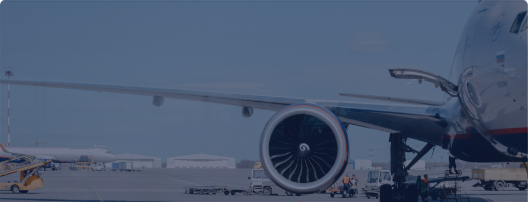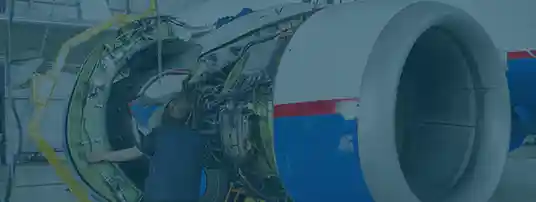It is safe to say that each and every component of an aircraft plays a crucial role in overall flight operations. Thus, ensuring the quality and reliability of these parts is not just a matter of preference; it is a regulatory necessity. This is where Parts Manufacturer Approval (PMA) comes into play as a critical process in the aerospace industry for the availability of components, and in this blog, we will discuss exactly why that is. Read more >>
In the vast realm of aviation, the efficiency and performance of an aircraft regularly hinge upon the intricate design and composition of its wings. These marvels of modern engineering are not merely elements for generating lift, but dynamic structures that contribute significantly to the aircraft's aerodynamics, stability, and overall functionality. In this blog, we will discuss the various components that commonly make up aircraft wing structures, unraveling the design choices that permit heavier-than-air flight for countless models. Read more >>
It is easy to forget the intricate systems and components that make modern aviation possible. Avionic components, often referred to as the "brains" of an aircraft, play a critical role in ensuring the safety and functionality of every flight. In this blog, we will delve into avionic components, discussing common parts such as the Global Positioning System (GPS), weather system, multifunction displays, and more. Read more >>
The Illustrated Parts Catalog (IPC) and Air Transport Association (ATA) Chapters are classification systems that are widely used in the aviation industry, serving to organize various parts and components that are used on aircraft. Despite each system serving a similar role in providing reference documentation and organizational structures for the industry, the way in which they classify parts and are used differ. Below, we will provide a brief overview of the Illustrated Parts Catalog and Air Transportation Association Chapter system, allowing you to have a better understanding of each. Read more >>
Similar to the way that cars use tires for shock absorption, airplanes also use inflated tires to absorb the force of landing on the runway. However, unlike the tires on cars and trucks, airplane tires are rarely inflated with air. Instead, most airplanes feature nitrogen-inflated tires that offer several benefits where oxygen-filled tires fall flat. Some key benefits of using nitrogen include its non-flammable nature and its ability to keep out moisture, in addition to protecting against corrosion and promoting consistent pressure. For these reasons, it has become preferred within a number of heavy-duty applications like car racing, construction, and within the aviation industry. Read more >>
All modern airplanes, spacecraft, and artificial satellites employ several electronic systems that carry out various duties related to their purpose and mission. As their prescribed tasks become more sophisticated, so too do their electrical systems; these aircraft electrical systems are referred to as “avionics,” a term combining “aviation” and “electronics.” Often featured in the cockpit of a plane, avionic components are featured in flight control, navigation, communication, fuel, weather radar, and other systems that carry out hundreds of other mission and flight management tasks. In this article, we will discuss some of the central avionic technologies used in aircraft. Read more >>
Across an entire aircraft and the runways it uses, there are too many lights to count, ranging from taxi lights to runway turnoff lights, and more. For a general understanding of what they are used for, the lights on aircraft can be broken down into categories by their colors, functions, and purposes. Throughout a single flight at night, all lights may be used at least once, but at varying stages of flight. For example, taxi lights and runway turnoff lights are typically used when the airplane is on the ground, while anti-collision lights and navigation lights are a must during the whole flight. To help you better distinguish between the different types of lights used by aircraft, this blog will further explore the common groups of lights and their...
While years of research and innovation went into making the first aircraft, early designs, and still current designs, are far from perfect. The aviation industry continues to evolve, making constantly better designs. One major shift in aircraft design was the change in the location of the engine. Aircraft once had engines attached to the nose, above the wings, blended into the wings, and the rear fuselage. Today, most aircraft engines are stored under the wings for better overall performance. Many factors contributed to this shift in design, so this blog will explore the reasoning behind the engine’s new location for your better understanding. Read more >>
Aircraft are highly advanced flying machines, and they feature a wide variety of technology and systems that make them one of the safest ways to travel by far. With large, complex aircraft like Boeing and Airbus wide-body airliners, there are many systems spread across assemblies that are crucial for flight, and having the ability to monitor their health and respond to issues is paramount to avoid any hazards. Generally, pilots and crew members will rely on altering systems such as the EICAS to maintain awareness and safety, and having a general understanding of such systems can be beneficial for anyone involved in the industry or those who hold an interest in aviation. Read more >>
With the constant demands placed upon general aviation aircraft, it is critical to have a robust ground operations network. With multiple actions needing to be accomplished between flights, owners often look for entities capable of efficiently providing a wide range of services. With the current air transportation model, owners of both private and commercial aircraft have numerous options for ground service operators, but most choose to depend upon a fixed-base operator (FBOs). To provide a better understanding of the role that FBOs play, we will discuss some of the services they offer, as well as the equipment that supports them. Read more >>

 The only independent
The only independent



“We Proudly Support Intrepid Fallen Heroes Fund that serves United States Military Personal experiencing the Invisible Wounds of War : Traumatic Brain Injury (TBI) and Post Traumatic Stress (PTS). Please visit website (www.fallenheroesfund.org) and help in their valiant effort”.
We Hope that You Will Visit Us Again the Next Time You Need Aircraft Parts and Make Us Your Strategic Purchasing Partner.
Request for Quote